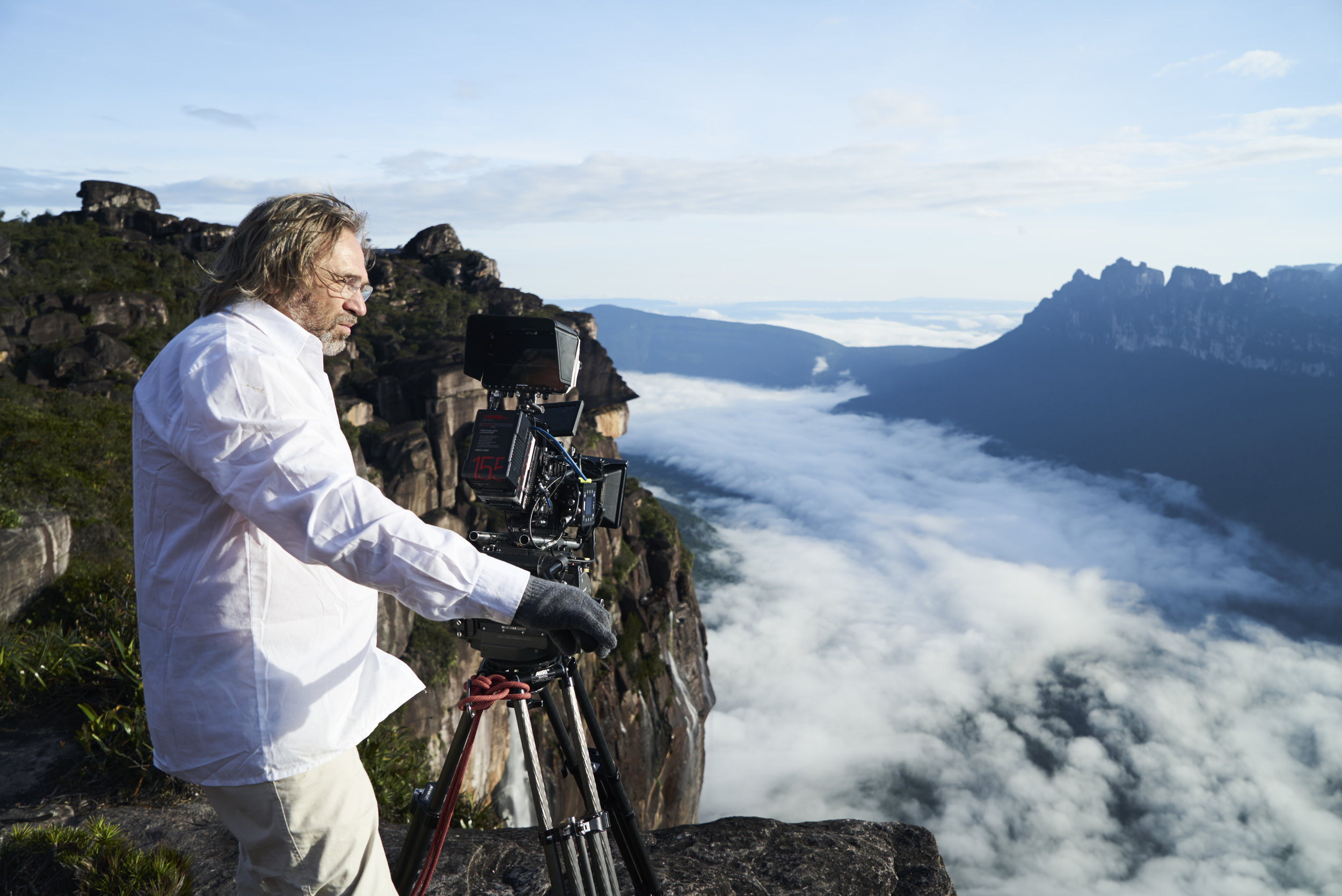Aquarela: Water, water everywhere, in all its power, in a doc to make you think
By Liam Lacey
Rating: B-plus
Water, ice, mist, rain, oceans - H20 in its various forms is the star of Russian director Viktor Kossakovsky's Aquarela, a visually intense, immersive documentary.
Shot at 96-frames-per-second, Aquarela has a you-are-there clarity to unnerving effect. While Kossakovsky has said his plan was to show every emotion created by water, the emphasis is on the beautiful and the terrifying, from glaciers calving massive bergs into the sea off Greenland, to the devastation of Hurricane Irma in Florida.
Director Viktor Kossakovsky sets up a shot perilously close to Angel Falls in the documentary Aquarela
The cinematography by Kossakovsky and Ben Bernhard, emphasizes a near-abstract sense of form, texture and colour, while the editing, by Kossakovsky, with his co-editors Molly Malene Stensgaard and Ainara Vera, creates a loose narration of water's progression, from ice to mist with the environmental message more implicit than overt.
The humans in the film are mostly seen in the opening segment. Set on the frozen surface of Siberia's Lake Baikal, it serves as a sort of overture, establishing the sense of dread and, indirectly, the effects of climate change. Men in orange vests are doing something involving wooden sticks poking through the ice, followed by a winch. After a while, we realize they are extracting a car from the lake. The passengers and drivers escaped that one. ("Usually it melts three weeks later than this,” says one of the passengers.) The passengers in the next car aren't so lucky.
Next comes the Greenland segment, the giant pieces of ice groaning and collapsing, to a somewhat on-the-nose thrashing soundtrack from Finnish composer, Eicca Toppinen, with his classical-heavy metal group, Apocalyptica.
That sequence is followed by a journey on a 100-foot schooner, crossing the Atlantic from Portugal to Greenland, as the crew battles against waves the size of houses. In a hair-raising tracking shot, we see palm trees bowing to the ground like supplicants before Florida's Hurricane Irma. The film ends with a visit to Venezuela’s towering Angel Falls. There, a rainbow forms over the top of the spray, seeming less a sign of hope than a banner proclaiming nature's vast power.
There's an overload of visual information in this kind of coffee table-catastrophe esthetic. And at 90 minutes, Aquarela pretty much wrings you out. But it also leaves a lot to reflect upon.
Water scientist Wallace Nichols refers to our neurological connection to water, evolved over millennia, as our "blue mind," that affects our attraction to everything from urban planning to commercials. Perhaps the source of our desire to stare at movie screens comes from our brain's hard-wired attraction to moving water. Kossakovsky's film evokes an involuntary undertow of anxiety. It’s a troubling film about troubled waters.
Aquarela. Directed by Victor Kossakovsky. Written by Victor Kossakovsky and Aimara Reques. Aquarela shows at the TIFF Bell Lightbox.

